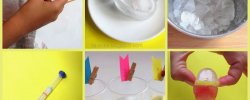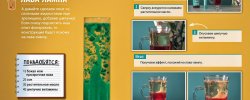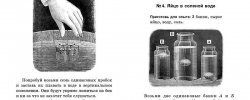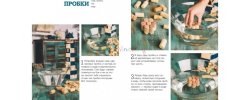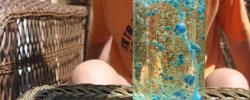8 Experiments Of Children
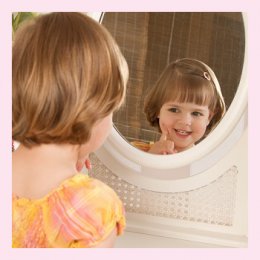 Text: Olga Forest, pedagogical psychologist
Text: Olga Forest, pedagogical psychologist
The reflecting surface of the mirror helps to develop the coordination of the movements of the baby. A mirror may also be useful for developing games (not only those known to each child by solar borrowers) and scientific experiments.
Child mirror games
At the age of 3 to 4 years, the concepts of the right and the left can be used in the games for the development of spatial perceptions.
1. The mirror double. Look in the mirror with the child and explain when he raises his right hand, the reflection is the left hand. Turn around and then stand up against the baby and tell him you're a mirror. The kid shows the moves, and you say 'em.' He raises his right hand and you're left. You'll have to make your moves. Then change your roles.
2. Rebuses. A mirror can explain to the child and the notion of symmetry. Give the left half a simple picture (home, mushroom or flower). Put the mirror on the right so it can be symmetrical. The baby will see the image become complete. Ask me to play by drawing the floors and guessing what the object is. Then check yourself with a mirror.
3. Mysterious code. Children often write letters in mirror images without notice of their mistakes. Together, examine the correct and wrong letters and their reflection. And the older child, introduce the magic mirror code that he can exchange with his friends mysterious messages.
4. Emotion theater. Let the kid sit in front of the mirror and be an actor. Ask me to paint through mymics different emotions: joy, sadness, surprise, excruciation, anger. It's harder to learn the wrong language. Mimika and gestures, for example, I'm hot. I'm thirsty, I've caught a huge fish, I'm a champion!
Children's experiments with mirrors
They don't need sophisticated equipment, but you'll have to take account of the time of day and weather.
1. The moon is at your house. Experience takes place at night when the window shows the Moon. The mirror with the inverted surface, point towards the Moon. Ask the child to stand by the window and turn another flat mirror so he can see the Moon reflected in the interior glass. Now ask the child to take the extra glass and look at the image of the Moon in the flat mirror.
What's the baby gonna see?
The moon in a flat mirror seems closer, and the glazing glazing allows for an even greater image.
